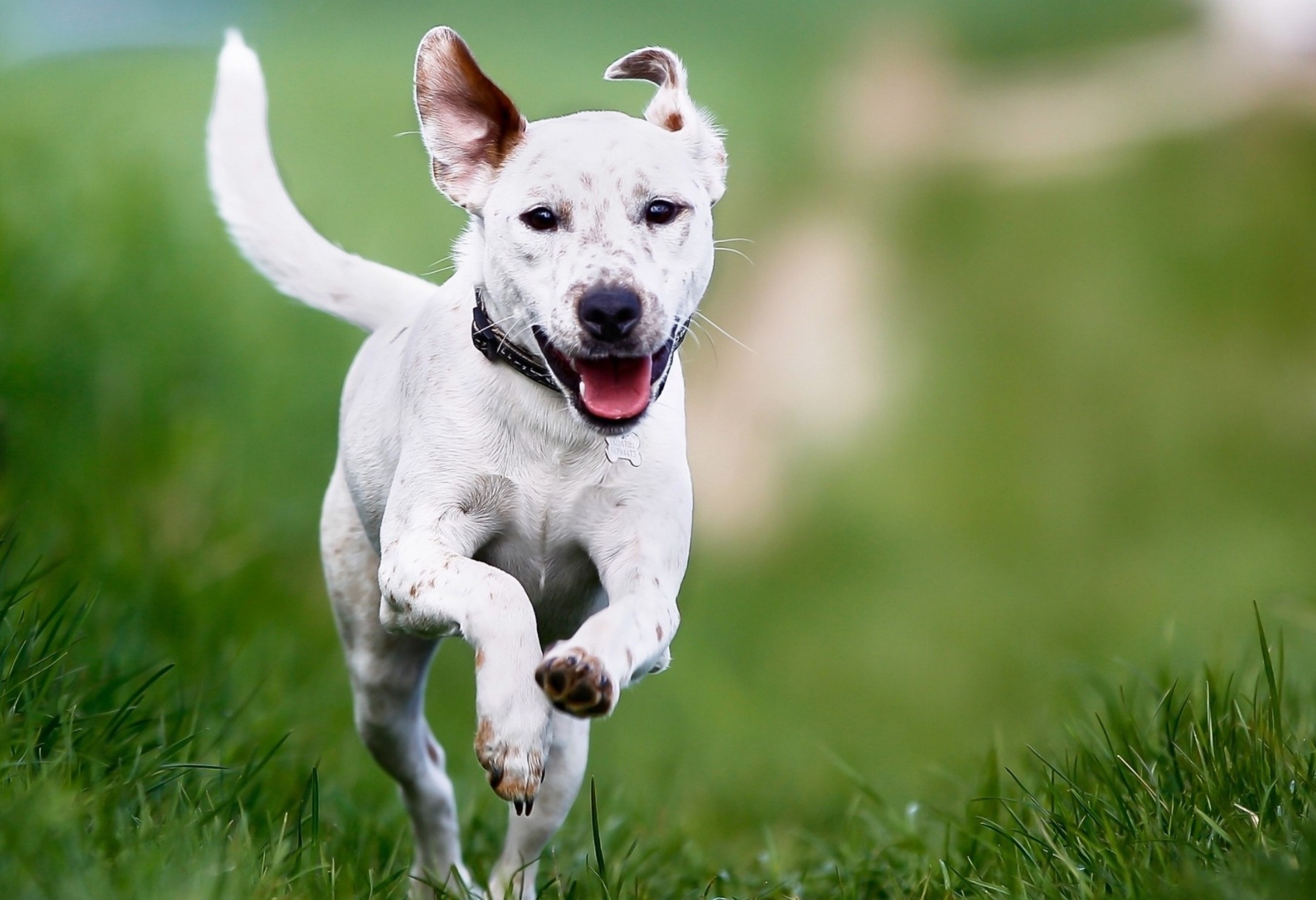Your Cart is Empty
Get Up To 35% OFF & Free Delivery
Get Up To 35% OFF & Free Delivery
Get Up To 35% OFF & Free Delivery

Welcoming a fur-friend into our lives can be a huge decision, so how do you pick the right dog for you? Choosing the right dog for your lifestyle is essential to creating a harmonious home, and choosing the right breed plays a key role in this. Additionally, considering your future dog and how it aligns with your lifestyle is crucial.
Whilst it’s tempting to pick the first bundle of fluff you see, putting a bit of time and thought into your selection can really help both you and your new dog create an incredible bond. Choosing the right dog breed, or adopting a suitable match, will mean you are both well suited. Being well suited to your dog, and they to you, makes for much more harmonious living. And considering this could be a 15-year commitment, this should be top of your list!
Here’s a rundown of how to pick the right dog for you.
The biggest factor in choosing the right dog isn’t actually the dog… it’s you! Have a think about the following areas, and use these as your criteria for deciding which dog suits you best.
How experienced are you with dogs? Did you grow up with them, have you owned one before, or will this be your first time being around a canine companion?
What is your work schedule like? No dog should be alone all day, so will you need to factor in the cost of a dog walker? Do you work from home? Or can your dog come to the office too?
What is your budget? Can you afford a big, hungry mouth to feed, or would you prefer a smaller stomach?
How active are you? Are you a marathon runner or do you much prefer a leisurely walk? If you have an active lifestyle, consider breeds like Border Collie or Papillon that match your need for physical activity.
Where are you located? Are you an urbanite ready to hit the dog park or do you have acres of walking space nearby?
Having an accurate assessment of all of the above can really help you narrow down your options, and find a dog that will thrive in your home.
With the above in mind, it’s useful to start thinking about dog breeds that could work with your circumstances.
Whilst not all breed stereotypes are true, especially those about aggression, breed characteristics can be useful.
Often, each breed has a generally accepted set of needs, activity levels & sometimes common health issues. For example, herding breeds like Collies and Shepherds are considered very intelligent, whilst sledding dogs like Huskies will nearly always need heaps of exercise, and Pugs frequently experience respiratory issues.
Breed clubs can provide valuable information and resources, including handling breed rescue directly and offering coordination, online listings, fundraising, and grants to local breed rescue organizations.
Speaking to a local expert, fellow dog owners, or joining Facebook groups dedicated to different breeds can be a great way to get inside knowledge. Using this first-hand experience of a breed before making any firm decisions or contacting breeders is a great way to get impartial advice about whether they would be suitable for your family and your lifestyle.
Don’t forget that mixed breed dogs are also an option. Sometimes this can create a great balance of characteristics. Plus cross-breeding can also lead to a hypoallergenic dog too, useful for those with allergies. Some experts believe that mixed-breed dogs also end up with fewer health problems than purebred dogs.
Dog training is crucial in ensuring a good fit between the dog and the owner, as it can transform the relationship and help dogs adapt to various lifestyles.
Probably one of the most important things to consider is how much exercise your new pal will be needing, as well as their personality traits. You probably already know that without adequate exercise, any breed can begin to exhibit some frustrating behaviors (like toileting inside!) You’ll want to make sure your new fur friend has a similar activity level to you to avoid any unwanted issues.
If you’d like a running partner, fancy taking up a new doggy sport, or would enjoy several walks a day then an active breed would suit you perfectly. Shepherds, Collies, Huskies, Spaniels & Boxers are usually the energizer bunnies of the dog world.
If you are looking for something slower-paced, perhaps just one long walk a day, then you will probably be better off with a lower energy dog. A Pug, Basset hound, Bulldog, and some Retrievers can make for chilled-out canine companions.
Remember that these are generalizations, so always be willing to adjust the amount of exercise and attention you give your dog if necessary, by hiring a dog walker or leaving Fido at home for that long run!
Puppies are always cute, but some breeds really approach growing as an Olympic sport! Meeting full-grown dogs is a great way to ascertain whether a breed might be perfectly sized or more than you can handle.
Want a dog that’s easy to carry and easy to manage? Then the lapdog or toy breeds would suit you well. Always had your heart set on a giant breed? Just make sure you have enough room for them to be able to stretch out. Owning a large dog requires considering the need for a suitable living space, potential weight limits for flights, and larger associated costs.
Don’t be fooled into thinking size is an indicator of energy levels either. Despite their size and athletic appearance, Greyhounds and Wolfhounds are often big on snoozing. While the very mini Miniature Pinscher can be bouncing off the walls without enough exercise.
Remember that small dogs will need a little extra care. Even simply being stepped on can cause serious injury to a delicate little body, and they may well feel the cold more too.
Cost also plays a role here. The larger the dog, the more expensive things like dog food, dog supplies, and medical treatments can become.
Remember that regardless of size, training is key. Sometimes the feistiest dogs are the smallest dogs, whilst a giant breed puppy needs to learn they can’t jump up or run straight into a stranger’s legs. Or else they could soon weigh more than you and cause a few accidents!
More and more dog owners are urban, choosing to welcome a canine companion into their city life. Some dogs can thrive in this setting, whilst others are much more suited to country life.
If you live in an apartment, for example, a giant breed might find themselves feeling a little cramped. Whereas breeds like the Shiba Inu, Bulldogs, Greyhounds, and the Maltese often enjoy urban life. Bear in mind that a more vocal breed might spell trouble for neighbors in close quarters, so breeds with less of a tendency to bark, like the Basenji, could be a useful consideration.
If you hate cleaning, then have a good think about your future dog’s coat.
Non-shedding and hypoallergenic dogs seem to be more popular than ever. Breeds like the Portuguese Water Dog, most Terriers, and the famous Poodle mixes have seen a marked growth in popularity. As well as being good for allergies, these dogs also don't shed - ideal for keeping a tidy home with little fuss.
If you’ve always adored Shepherds, Collies, or the Siberian breeds - get ready for the shed! Happening seasonally, it’s a good idea to invest in some grooming tools to help you keep on top of the hair loss, or even take a few extra trips to the groomers.
Adoption has become increasingly popular over the last few years and for good reason. As well as helping to positively change the lives of dogs in need of homes, it’s helping to bring down euthanasia rates in kennels and pounds. However, it’s also important to be aware of the differences between adopting a dog and raising a puppy, and which would work best for you. After all, if an adoptive dog isn’t right, sending them back to the shelter can be a very upsetting experience for both you and the dog. Rescue organizations can help you find the perfect breed for adoption, ensuring a good match for your lifestyle and personality.
Puppies require the greatest amount of training and attention, especially over the first six months. Imagine you are about to have a child! There are likely to be plenty of accidents in the house (so get yourself a Potty Buddy to prepare!), sleepless nights, and chewed furniture. With dedicated training and lots of patience, a puppy can become the perfect breed companion, whose history and experiences you know first hand. This can be an advantage, especially if you are planning on children or have young children in your family.
Adopting an adult dog can be an excellent choice too. You will be able to have an accurate assessment of their temperament and energy level before you bring them home, meaning you can usually ascertain your suitability easily. Adult dogs will often still require training, especially as they adjust to your household, but usually, this is much less intense than those first few years of puppyhood.
Nevertheless, some adoptive dogs are only suited to experienced handlers, who can keep on top of any issues or worries the dog may have accumulated. Some also do not suit households with children, which many rescue centers will make clear.
Senior dogs are another brilliant option. Welcoming a senior dog into your home can be a wonderful way to ensure a happy life for a relatively low-energy pet. Especially for an older owner or those with limited exercise abilities. Senior dogs may require more healthcare and may need living spaces to adapt to them, rather than the other way around.
Adopted puppies is another option, which is proving very popular as it can give an owner the best of both worlds. There can be long waitlists for adopted puppies, and you will not usually have the same level of information about the health of the puppy’s parents.
If you decide to look for a puppy rather than an adoptive dog, keep in mind the following:
A good breeder will allow you to meet them and the mother dog first.
The breeder should provide plenty of information on the health of their dog, and have them cleared for breeding.
Avoid any breeders who offer limited contact or viewing options, this could be a puppy farm. If you are suspicious you can talk to your local animal charity for further help.
Puppies should only leave their mothers at 8 weeks at the earliest, 12 weeks is usually the norm.
Follow the above, and you’ll be set to pick the perfect pooch for your lifestyle. Let us know how you get on & don’t forget to pick up a Potty Buddy to keep those floors clean in those early days, or for your apartment-dwelling doggo. You can thank us later!
See How Dog Owners Are Using These Leak-Free Potty Pads to Keep Their Homes Clean and Pups Happy
4.7 ⭐⭐⭐⭐⭐
Over 100,000 Dog Owners Saved Money With Potty Buddy™
The washable pee pads that absorb anything your dog throws at them, while keeping your floors and furniture stain-free.
✅ Super Absorbent and Leak-Proof
✅ Great for Potty Training
✅ Ideal for Puppies and Older Dogs
✅ Washable and Reusable For Years
✅ Save over $400/year by not buying disposables
-60 Day Money Back Guarantee-

⭐⭐⭐⭐⭐
-Diana D.
These pads are a life saver for my kitchen floor and bedroom carpet! Just ordered 2 more!




Check Out Our Most Popular Content